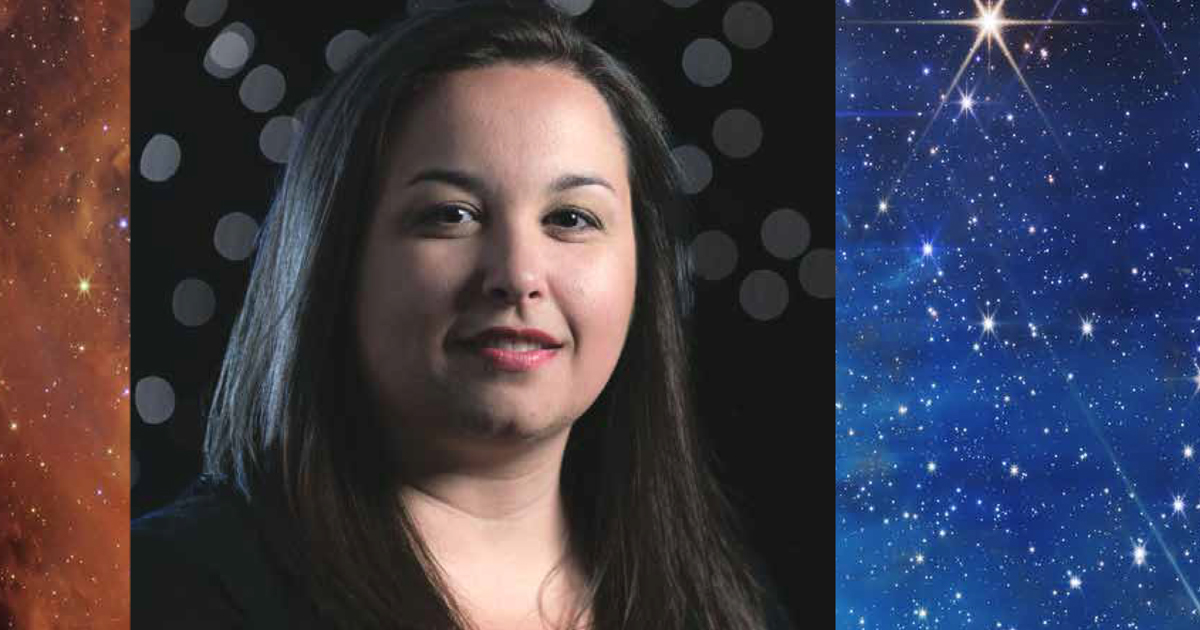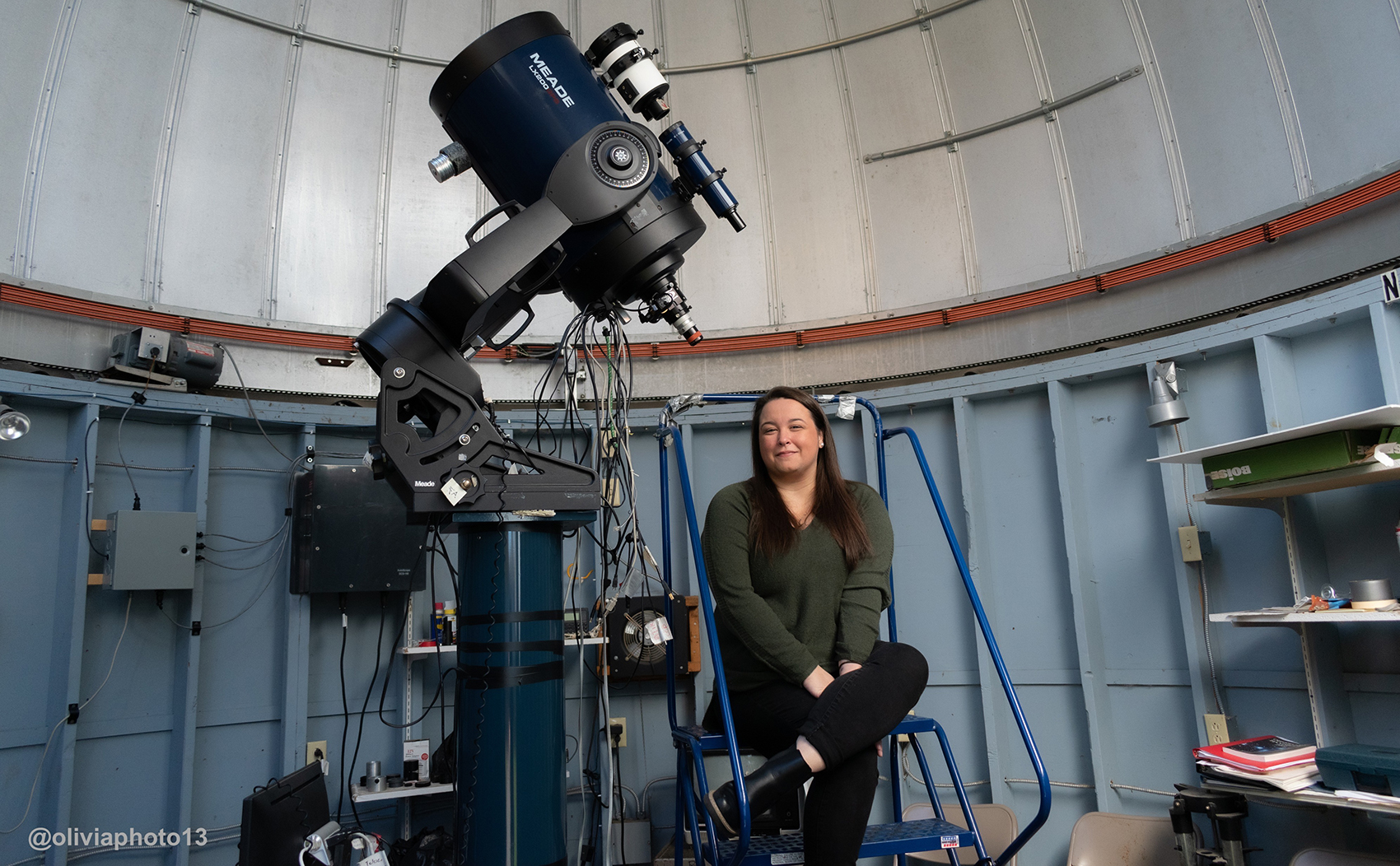
MVCC alumna among first scientists to work with James Webb Space Telescope
When the James Webb Space Telescope (JWST) began transmitting its first breathtaking images of the distant universe in July, Brittany Vanderhoof ’12 was among the first scientists to work with the observations that are revolutionizing our understanding of the cosmos.
“I still haven’t fully processed the emotions I have of being on the forefront of such a significant time in astrophysics,” says Vanderhoof, who majored in chemistry at MVCC. Now pursuing her Ph.D. in astrophysical sciences and technology at Rochester Institute of Technology, she is one of 50 researchers on the team for COSMOS-Web, the largest general observer program selected by NASA for JWST’s first year. Led by scientists at RIT and University of Texas at Austin, COSMOS-Web aims to map the earliest structures of the universe.
“Our main goals are focused on understanding galaxy evolution from the time of first assembly to what we observe currently,” she says. “Many galaxy-formation processes have been studied locally, but these same observations get more and more difficult the further away you look. JWST being so advanced in its capability to see so much farther — or back in time — is perfect for the type of studies our collaboration thrives on.”

Vanderhoof has been involved in many different aspects of the project — from writing the original proposal grants to analyzing data and writing papers and reports — thanks to COSMOS-Web’s support of early career scientists. “This has been wonderful in my ability to learn the processes of being involved in scientific collaboration on this level,” she says. “It also can be fairly intimidating to be in a Zoom call with those who paved the way for your field, and you’re joining them to discuss the details of the next big paper or study.”
Vanderhoof has co-authored several papers on new information from JWST observations, including one highlighting the identification of an object that COSMOS-Web estimates is being observed as it was 290 million years ago. The object, named Maisie’s Galaxy, is thought to be one of the earliest galaxies ever observed, which could indicate that galaxies began forming earlier than previously thought.
A lifelong passion for all things science made it difficult for Vanderhoof to choose one area to focus on when choosing a major. Going to MVCC gave her the opportunity to explore the different sciences and learn which fields aligned with her career goals.
“My time at MVCC really helped shape me into the scientist I am today,” she says. “It was actually my organic chemistry courses at MVCC that made me realize how much I loved chemistry. Now I am a space chemist, specializing in techniques in space that all stem from chemistry. And once you do chemistry in space, you can’t just come back to earth.”
